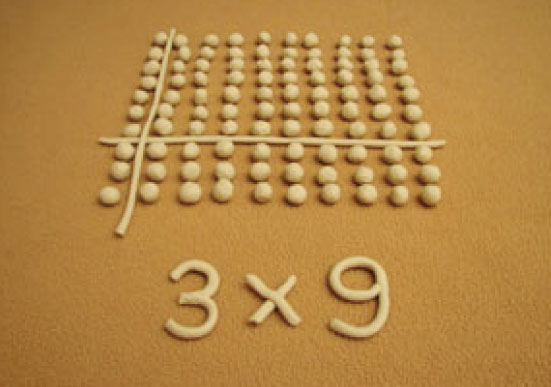
Dyscalculia: Lifting the Lid
Richard Whitehead, The Learning People Director (UK)
© Copyright 2005 - 2007
Dyscalculia is defined by Dictionary.com as: "Impairment of the ability to solve mathematical problems, usually resulting from brain dysfunction." It is probably as widespread as dyslexia and yet, curiously, is far less in the public awareness than its literacy cousin.
Sometimes, the same person can have both dyslexic and dyscalculic symptoms. Other learners may, by contrast, have highly developed literacy but poor numeracy skills, or vice versa. Like dyslexics, dyscalculics often develop survival strategies such as rote learning techniques, "do-it-for-me" strategies and, of course, the pocket calculator. These serve to mask their learning difficulty from prying eyes. Generally speaking, there are fewer eyes prying at dyscalculic difficulties than at dyslexic difficulties, so the strategies tend to work.
Dyscalculics often have a related difficulty with telling the time, using a calendar, and therefore also with time management.
Dyslexic and dyscalculic learners have several perceptual abilities in common, one of which tends to be proficient non-verbal thinking (“thinking in pictures or with feelings”). In order to understand and solve mathematical problems, the dyscalculic learner needs to have a clear mental image for the meaning of every symbol that the problem contains.
The math problem 12 x 30, for example, could throw up any of the following confusions:
- a person doesn’t have a mental image for the quantity represented by 12, or for that represented by 30;
- a person does have a mental image for these quantities, but doesn’t associate them with the numerals 12 and 30;
- a person doesn’t have a mental image for the meaning of multiplication;
- a person does have a mental image for the meaning of multiplication but doesn’t know that this is what the symbol x represents;
- a person doesn’t understand the principle of place value – that a number in the tens column represents ten times as big a quantity as a number in the units column;
- a person doesn’t grasp the principle that an equation is about starting out with one number, changing something, and finding out what number we arrive at as a result of the change.
Literacy pupils are frequently taught the "alphabet song" as a means of memorising the alphabet. In later life, dyslexic learners frequently find themselves dependent on this technique as a “prop” whenever they need to find an entry in a dictionary or telephone directory.
For the dyscalculic learner, the times tables can serve the same function. It is possible to rote-learn times tables, thereby giving the impression of "knowing" them, without having any understanding of the reasons why they are true. To the observer, the rote-learnt information masks the underlying learning difficulty. But the difficulty is still there.
Alongside the Davis Dyslexia Correction Programme, Davis Facilitators are trained to provide an intensive, one-to-one Davis Maths Mastery Programme for the dyscalculic learner. Through our work with children and adults with maths difficulties, we know that these difficulties stem not from brain dysfunction, as Dictionary.com suggests, but from the same perceptual talent that can give rise to dyslexia.
To me as a Davis Facilitator, the process of uncovering and decoding mathematical symbols and functions for the dyscalculic learner is one of the most exciting jobs on earth. Throughout the ages, philosophers have been fascinated by the beauty and elegant simplicity of mathematical truths. Enabling a person to perceive these truths for the first time can be likened to the feeling that an eye surgeon must get when observing a patient’s excitement after a successful cataract operation.
All mathematical symbols and functions are rooted in foundation concepts which constitute the very fabric of our universe. In a Davis Maths Mastery Programme, we start with a creative process called Davis Concept Mastery, with which we work through the concepts of change, consequence, cause, effect, before, after, time, sequence, order and disorder. Every one of these concepts is essential to a person if they are to fully understand the nature of mathematical truth.
From there, a series of clay-based exercises provide an experiential understanding of all the arithmetical functions and symbols. A series of carefully sequenced paper-and-pencil exercises build proficiency and confidence at solving equations on paper. Finally, a clay-based technique known as Davis Symbol Mastery enables any confusing words in mathematical story problems to be fully understood.
When a person has fully mastered the basic arithmetical functions and can interpret a maths story problem with ease, a Davis Maths Mastery Programme has achieved its goal.
Yet clay-based learning does not have to stop at the point when a learning difficulty has been resolved. All learners can benefit from experiential mastery of some of the more advanced mathematical processes, including algebra, number bases, and factoring quadratic equations.





